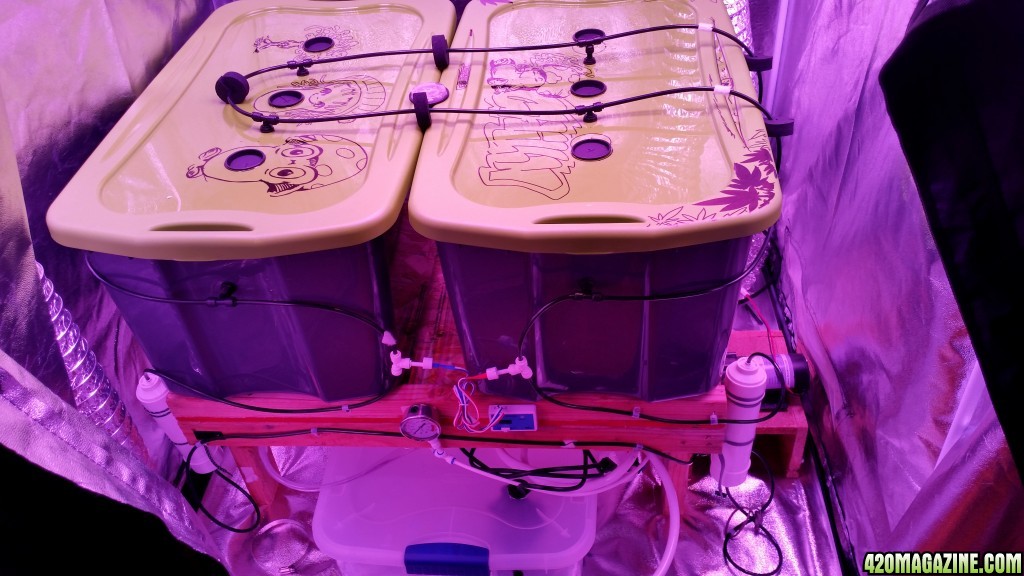PetFlora
Well-Known Member
I started HPA over 5 years ago. Fortunately, I received a lot of help, which I have tried to pass on here. Accept it or not. Every HPA root chamber I have ever seen, aside from this 5g bucket are ALL very large chambers, ~ 3Xs greater than the eventful root mass. Why?
The micron size of the nutrient molecule is critical to maintaining root hairs. I believe ideally it should be between 50-80 microns. Bigger than that over-wets the roots inhibiting root hair development. Further, ideal mist cycle is under 1 second repeated ~ every 3 minutes (hence the need for pressure tanks and solenoids to provide a tacky wetness to prevent the root hairs from drying out, and within a short cycle, making them hungry for their next meal
The micron size of the nutrient molecule is critical to maintaining root hairs. I believe ideally it should be between 50-80 microns. Bigger than that over-wets the roots inhibiting root hair development. Further, ideal mist cycle is under 1 second repeated ~ every 3 minutes (hence the need for pressure tanks and solenoids to provide a tacky wetness to prevent the root hairs from drying out, and within a short cycle, making them hungry for their next meal







